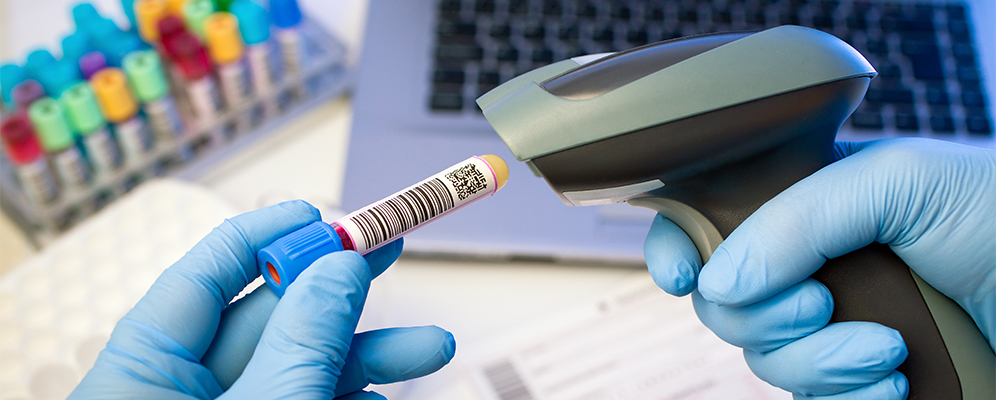This blog post will provide an overview of the GUDID, its purpose, how it works, and its impact on the healthcare industry.

Table of Contents
The FDA’s Global Unique Device Identification (UDI) Database is a pioneering initiative that has revolutionized the medical device industry.
The UDI system was established to enhance patient safety by providing a standardized way to identify and track medical devices throughout their lifecycle.
This database serves as a comprehensive repository of information for all medical devices available in the market. It contains essential details such as the device’s manufacturer, model number, lot number, and expiration date.
By implementing this database, the FDA aims to improve the efficiency of device recalls, facilitate post-market surveillance activities, and enhance the overall safety and effectiveness of medical devices.
Additionally, the UDI database plays a vital role in post-market surveillance activities. By capturing data on medical devices throughout their lifecycle, regulators can monitor and analyze safety trends more effectively. This enables the timely identification of potential risks or adverse events associated with specific devices.
Manufacturers and healthcare providers can also use this information to identify patterns and improve product performance. By collecting and analyzing real-time data, the UDI database facilitates evidence-based decision-making and continuous improvement in the design and usage of medical devices.
Purpose of the GUDID
The purpose of the GUDID is to provide a standardized system for identifying and tracking medical devices throughout their lifecycle.
Each medical device that is approved by the FDA is assigned a unique device identifier (UDI).
The UDI consists of a series of numeric or alphanumeric characters that identify the device, its manufacturer, and other important information such as its lot or batch number, expiration date, and serial number.
On June 26, 2014, the FDA issued the Global Unique Device Identification Database (GUDID): Guidance for Industry.
The FDA requires all medical device manufacturers to submit information about their devices to the GUDID, including the UDI, product information, and device labelling.
This information is then made publicly available in the GUDID database, which can be accessed by healthcare providers, patients, and other stakeholders.
How the GUDID Works
The GUDID is a centralized database that is managed by the FDA – Medical device manufacturers are required to submit information about their devices to the GUDID in a standardized format.
This information includes the UDI, product information, and device labeling. The FDA reviews and approves this information before it is added to the GUDID database.
Healthcare providers, patients, and other stakeholders can access the GUDID database to search for information about specific medical devices.
They can search by UDI, manufacturer, device name, and other criteria. The GUDID also includes a web-based interface that allows users to access and download information from th
Checklist: Steps to Prepare for GUDID
- Review UDI guidance documents and resources to create an internal action plan/timetable for preparing data for the GUDID
- work with FDA-accredited issuing agencies to assign and maintain UDIs
- Establish processes for physical labeling
- Gather data required for GUDID DI records.
- Identify GUDID user roles and responsibilities.
- Identify/obtain appropriate Dun and Bradstreet (DUNS) numbers
- Verify the information in the D&B database
- Determine a GUDID submission option.
GUDID submission options include manual data entry via the GUDID Web Application and HL7 SPL File Submission via the FDA Electronic Submissions Gateway
Impact of the GUDID on the Healthcare Industry
The GUDID has had a significant impact on the healthcare industry since its introduction. Here are a few examples of how GUDID has improved the identification and tracking of medical devices:
- Improved Patient Safety The GUDID has improved patient safety by providing healthcare providers with accurate and up-to-date information about medical devices. This information can help healthcare providers make informed decisions about which devices to use for their patients. The UDI system also helps to identify and track devices that may be defective or have been recalled.
- Streamlined Device Tracking The GUDID has streamlined the tracking of medical devices throughout its lifecycle. The UDI system allows for easy tracking of devices from manufacturing to distribution, to use, and disposal. This streamlined tracking system reduces the risk of lost or stolen devices and helps to prevent counterfeiting and gray market sales.
- Improved Inventory Management The GUDID has improved inventory management for healthcare providers by providing accurate and up-to-date information about medical devices. This information can help providers to manage their inventory more efficiently, reducing the risk of stockouts and overstocking.
- Increased Transparency The GUDID has increased transparency in the healthcare industry by making information about medical devices publicly available. Patients and other stakeholders can access the GUDID to search for information about specific devices, including their safety and effectiveness. This increased transparency promotes accountability and helps to build trust between patients, healthcare providers, and medical device manufacturers.
The UDI database promotes transparency and accountability within the medical device industry. Patients and healthcare providers can access this public database to obtain accurate information about specific devices.
This empowers them to make informed decisions about the use of medical devices and fosters trust in the healthcare system. The database also serves as a valuable resource for researchers and academics who can use the wealth of data available to conduct studies and contribute to the advancement of medical knowledge.
In conclusion, the FDA’s Global Unique Device Identification Database is a game-changer for the medical device industry.
By providing a standardized system for identifying and tracking devices, this database enhances patient safety, improves device recalls, facilitates post-market surveillance activities, and promotes transparency within the industry.
As the database continues to evolve and expand, it will undoubtedly contribute to ongoing advancements in medical device safety and effectiveness.
LexisNexis Reed Tech empowers innovators by assisting them in understanding the nuances of regulatory requirements, developing product data management strategies, and meeting compliance deadlines on time. As experts in data management and strategy, check out Reed Technologies to learn more about UDI.
How Can RegDesk Help?
RegDesk is a holistic Regulatory Information Management System that provides medical device and pharma companies with regulatory intelligence for over 120 markets worldwide. It can help you prepare and publish global applications, manage standards, run change assessments, and obtain real-time alerts on regulatory changes through a centralized platform. Our clients also have access to our network of over 4000 compliance experts worldwide to obtain verification on critical questions. Global expansion has never been this simple.


